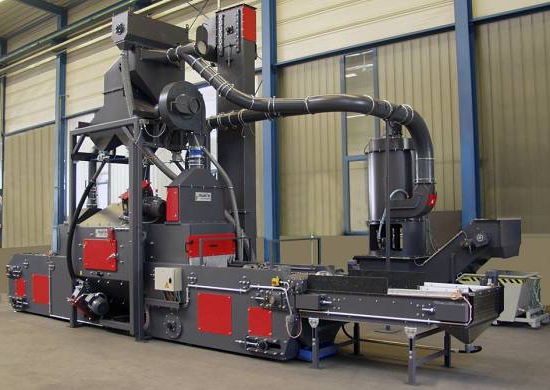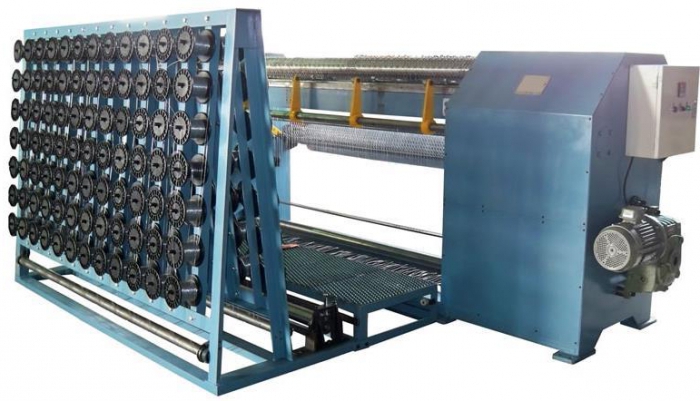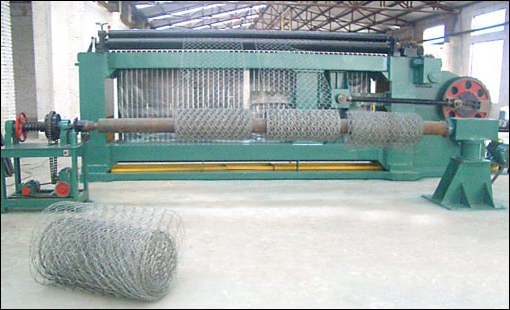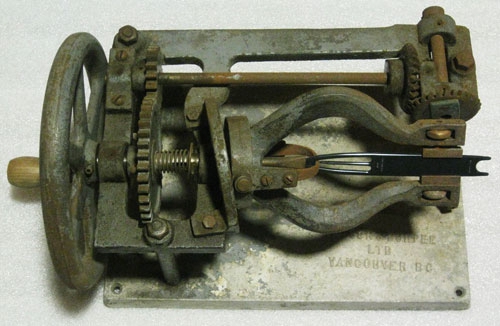Demand for netting has always been and remains high and stable. This is an important plus when organizing your business for the production of these products.
Moreover, to start does not require large capital investments. Equipment for the production of mesh netting quite compact, the finished product is rolled up and also does not require large storage space. Consider the organizational aspects of creating this business.

Where is the Rabitsa grid applied?
According to consumption estimates, approximately ninety percent of the total produced mesh is used for the arrangement of fences and fences at construction sites, summer cottages and household plots, and the production of enclosures for animals and birds.
The remaining ten percent covers the diverse needs of agriculture, construction, engineering, energy (sifting of building materials and crushed rocks, reinforcement during plastering, the manufacture of protective shields for ventilation shafts, strengthening slopes from shedding, sewn pipelines and heating mains, etc.) .
Before starting the production of netting, we should assess the demand for it: take into account the range, quantity, and sales volumes of competitors. In addition, analyze prices and offers in the retail network and wholesale construction bases.

Finished Product Requirements
The production of netting is regulated by GOST 5336-80. According to the current legislation, the manufacturer is not obliged to confirm the quality of the products manufactured by him with the relevant certificates. However, as practice shows, voluntary testing to comply with GOST significantly increases the chances of a successful business.
Equipment for the production of mesh netting
The main expense in the organization of their business is allocated to the acquisition of machine tools that manufacture products. The modern Russian market offers a huge selection. Here you can buy equipment for the production of netting netting of various types and manufacturers. Especially widely represented are Chinese-made lines.
If you wish, you can even find detailed instructions on how to assemble a machine for the production of netting netting with your own hands from improvised parts. However, in the framework of this article, we will not give schemes of various "kulibin", but focus on proprietary options.
Moreover, for your business, it is better to purchase industrial equipment that is guaranteed to work for a long time with the performance you need. In addition, homemade machines are unlikely to be able to pass a state check for compliance with the quality of finished products.
As an example, we consider two main options for industrial lines - these are fully automated and semi-automatic machines.

Machine for the production of mesh Rabitsa
Such equipment is able to provide a fully streamlined production process. It does not require outside intervention. The advantage of automatic lines is high productivity, fast bending, precision weaving and minimal intervention by workers.
The operator can only load the coil and remove the finished roll of mesh.The disadvantages of such equipment include the high price of the production line (approximately 200 thousand rubles), the cost of maintenance and repair, as well as the need for special training of personnel.

Semi-automatic machines
Semi-automatic equipment for the production of mesh netting requires the active participation of working personnel throughout the entire manufacturing process. The advantage of such lines is the relative cheapness (35-40 thousand rubles). The main disadvantage is that, despite the partial automation of the manufacturing process, many functions have to be performed by manual labor, including the bending of the mesh.
As a result, asymmetry of cell sizes and other minor flaws are visible in the finished product. The choice of a machine for the production of mesh netting will depend on you - if the starting capital allows, it is better to purchase an automatic line. This will ultimately reduce costs due to fewer workers and increase productivity.

What are the machines
This equipment is usually divided into three classes. The first of them is a manual machine for the production of netting netting for personal needs. It is characterized by low productivity, only 7-10 meters per day, so it is clearly not suitable for creating your own business.
The second class is more suitable for small businesses - these are automatic and semi-automatic lines. Their productivity is 150-230 square meters per shift. The third class of equipment is used in large and medium enterprises. The productivity of such machines is 60 square meters per hour. The disadvantages of such equipment include high requirements for the wire and the long time required to reconfigure the line.
Space requirements
To organize your production, you will need to choose the appropriate room. One automatic or semi-automatic line requires 15 square meters for its placement. Depending on the planned number of machines, it is necessary to calculate the total area. One of the important conditions is the presence of a three-phase voltage in the workshop. In addition to production, storage facilities for finished products and raw materials will also be required.

Process description
Consider the technological process for the production of mesh netting. The industrial line does all the work in automatic mode. The operator only needs to load a coil of wire into the machine’s receiver, then program the microprocessor for specific parameters of the finished product (raw material thickness, roll size, cell diameter) and press the “Start” button.
The wire for the production of netting from the reel, thanks to the unwinding device and the guide sleeves, is pulled to the area where the spiral is formed by winding it on the screw (this is the working mechanism that prepares the material for subsequent weaving). Next, the wound spirals go to the guillotine mechanism.
Here the wire is trimmed. One of its ends bends in the form of a hook, the size of which corresponds to half the length of the cell. Next, the workpiece is pulled through the grooves of a continuously rotating shaft and is attached to the guillotine mechanism. The cut-off spiral is fixed with special grips, stretching under the action of a suspended load.
After that, the machine winds the next wire with the weaving of the one that is held in the grips, thereby forming mesh-netting cells. Having cut off the newly formed spiral, the mechanism releases the held wire, and the product is rolled into a roll with a programmed length. Then, the finished product is processed with machine oil, its edges are packed with thick paper. Further, finished rolls can be transported to storage facilities.
